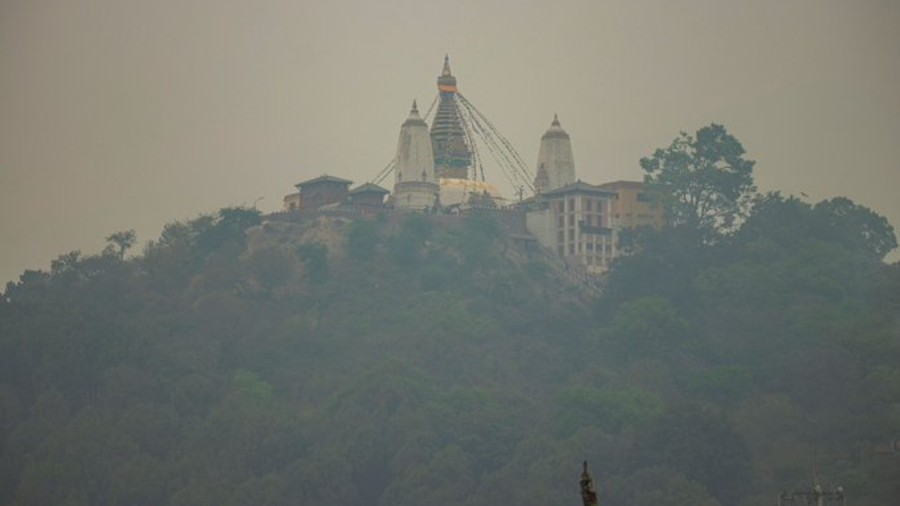After an initial drop in the PM2.5 levels during Covid-related lockdowns in 2020, the eastern states of Bihar, West Bengal and Odisha saw a rising trend in the air pollutants in 2021, the Centre for Science and Environment (CSE) said on Monday.
"It is January, and the eastern states of India - Bihar, West Bengal and Odisha -- are now feeling the sting of increased winter air pollution.
"The winter smog that engulfs north India during early November begins to extend eastwards during late December and early January. Bihar, West Bengal and Odisha are affected mostly during this time when winter inversion and the cool and calm conditions trap the local pollution that is already high," the environment think-tank said.
The analysis found that nearly all cities in the region showed a drop in the annual average PM2.5 level in 2020, which was also the year with maximum lockdown phases.
"But there is a rebound and a rising trend once again in 2021, though in several cases, the levels are lower than the 2019 level. Durgapur, a big industrial hub of West Bengal that is also designated as a critically polluted area by the CPCB, has the most polluted air in the region with a 2021 average at 80 ug/m3. This is followed by Muzaffarpur and Patna with the 2021 annual average of PM2.5 at 78 ug/m3 and 73 ug/m3 respectively," it said.
Anumita Roychowdhury, executive director, research and advocacy at the CSE, said the analysis of real-time air quality data for the 2019-2021 period shows the downward dip in pollution that was induced by the lockdown phases of the pandemic in 2020 is threatening to bounce back with the levels in 2021 rising.
"But in many cases, the levels are still lower than 2019. This underscores the urgency of scaling up action across all sectors to prevent further worsening and arrest the trend in this region," she said.
Another expert said there are serious concerns around the missing data and gaps that make proper risk assessment difficult.
"Even though real-time air quality monitoring has begun to expand in these states to provide more up to date and real-time information on air quality, there are serious concerns around missing data and gaps that make proper risk assessment difficult. In some stations of Bihar and Odisha, data availability is so low that the trend cannot be assessed. Quality control of data is necessary," said Avikal Somvanshi, programme manager at the Urban Data Analytics Lab, CSE.
This new analysis of real-time pollution data by the CSE is a part of the air quality tracker initiative of its Urban Data Analytics Lab. The objective of this new analysis is to understand the trend and magnitude of pollution in different regions that have real-time air quality monitoring systems.
It covers 29 continuous ambient air quality monitoring stations (CAAQMS) spread across 12 cities in the three states.
In West Bengal, there are seven stations in Kolkata, three in Howrah and one each in Asansol, Siliguri, Durgapur and Haldia. In Bihar, there are six stations in Patna, three in Gaya, three in Muzaffarpur and one in Hajipur. In Odisha, there is one station each in Talcher and Brajrajnagar.
Even though there are more real-time monitors in a few other cities of these states, those could not be considered due to data gaps and a lack of quality data, it said.
"Moreover, in several cases, the real-time monitors have been set up recently and therefore, long-term data is not available. Several cities of Bihar got their real-time monitors between July and November 2021. There are two stations in Bhagalpur and one each in Bettiah, Bihar Sharif, Darbhanga, Motihari, Araria, Arrah, Buxar, Chhapra, Katihar, Kishanganj, Manguraha, Munger, Purnia, Rajgir, Saharsa, Sasaram and Siwan.
"But due to the excessive amount of missing data from these stations, a meaningful analysis has not been possible. Hajipur in Bihar has data availability for over two years," it said.
The CSE said in West Bengal, real-time monitors in Durgapur and Haldia became operational only near the end of 2020, which limits the possibility of doing long-term trend analysis for these cities. Odisha has very limited real-time monitoring.
"Therefore, data is indicative of the current status of air quality and seasonal variation in particulate pollution in medium and smaller cities," it said.
The analysis also found that the cities in these three states did not experience "severe" days in 2021 but the share of "poor" and "very poor" days was high.
"During 2021, severely polluted days have not been noted in any city. Share of 'very poor' days was highest in Muzaffarpur at 93, followed by Durgapur at 71, Patna with 67 days and Howrah with 58 days.
"Days with poor air quality were the highest in Durgapur at 71, followed by 67 in Patna, 53 in Kolkata and 51 in Howrah. These bad air quality days are concentrated during winter months," it said.
It also said there was a significant increase in the amount of nitrogen dioxide (NO2) in the air in all the cities of these states in December, compared to the months of November, October and September.
"Brajrajnagar (Odisha) registered a 3.6-time jump in the monthly NO2 level, Kolkata registered a 2.8-time increase, while Patna, Talcher (Odisha) and Asansol (WB) registered a 2.5-time increase.
"In absolute concentration terms, Patna registered the highest monthly average of 51 g/m3 for December. It was followed by Kolkata (50 g/m3) and Talcher (44 g/m3). Muzaffarpur, Howrah and Hajipur showed an increase in the amount of NO2 in November as compared to December," the CSE said.











